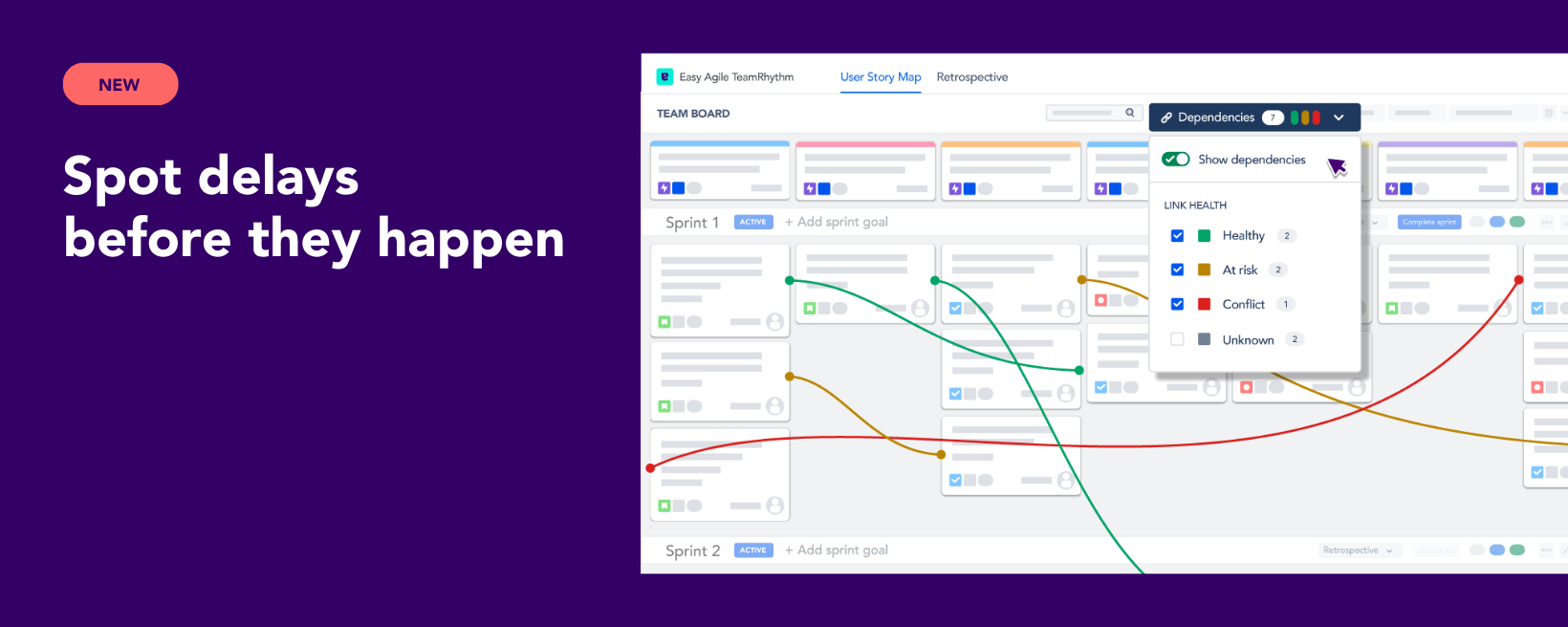- DATE:
- AUTHOR:
- The Easy Agile team

New feature! Dependencies on the User Story Map
When everything is important, how do you choose what to do first?
Prioritizing work just got easier now that you can visualize dependencies on the User Story Map in Easy Agile TeamRhythm.

See internal and external dependencies
You can now choose to see dependencies between issues on the same board (internal dependencies), and where one issue is on another board (external dependencies).
This gives you a clear picture of how work should be prioritized so that you avoid roadblocks and manage delays before they become a problem.
Choose what you see
Dependency lines can be switched on or off, and you can choose to see dependencies by health and type, so if you want to focus on managing at-risk dependencies, you can refine your view.
Switch dependencies on for sprint planning, and turn them off again for stand-up. Choose what works for you and your team.
Upgrade to version 13.0 to avoid unexpected roadblocks and extended delays.
Want to learn more?
Visit the Easy Agile Help Centre to learn how to visualize and manage your dependencies on the TeamRhythm User Story Map. Our detailed documentation includes:
how to visualize dependencies by health and type,
how dependency health is defined
how to see the details of your dependencies
how to create and edit dependencies
 For all the details visit: Dependency lines: issue links on the User Story Map
For all the details visit: Dependency lines: issue links on the User Story Map
Other updates
This release also includes small improvements and bug fixes:
Flagged an issue in Jira? You can now see that on the TeamRhythm User Story Map. They appear the same way as they do in active sprint or kanban boards and backlogs; highlighted yellow with a flag icon on the card.
The character limit for 'View' names has been increased to avoid creation failures due to excessive character length.